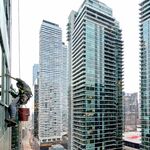steveintoronto
Superstar
^ Excellent response, I was a bit worried that I came off sounding negative, which to a degree I am. Not on the concept, it's one of the only affordable, here and now civilized solutions to downtown transit. I'm just miffed that so many Torontonians think the Emperor With No Cars travels King Street. What's been achieved so far is pathetic in many respects. The lack of Flexities has exacerbated the result so far, but that's becoming too convenient an excuse.
We still don't have traffic light priority for streetcars! (Before anyone claims that we do on that stretch, it's not priority in the world-class sense, like many other cities have).
I suspect Steve Munro will have a deconstruction of Haider's points, and the flaccid City/TTC reaction to them.
We still don't have traffic light priority for streetcars! (Before anyone claims that we do on that stretch, it's not priority in the world-class sense, like many other cities have).
I suspect Steve Munro will have a deconstruction of Haider's points, and the flaccid City/TTC reaction to them.







